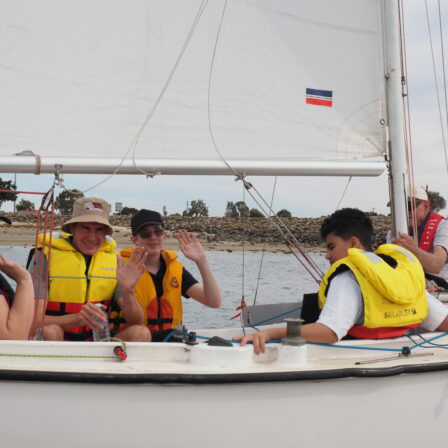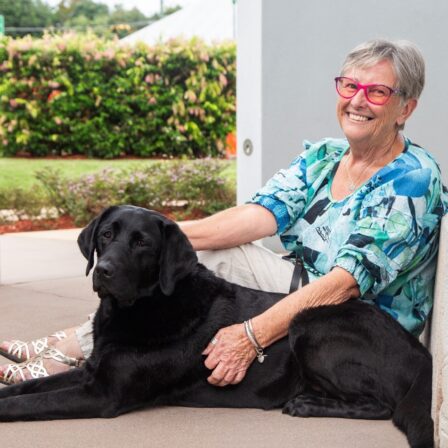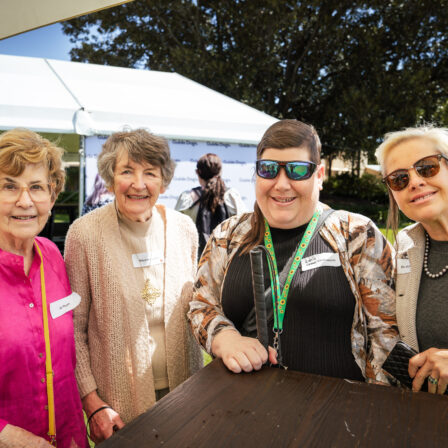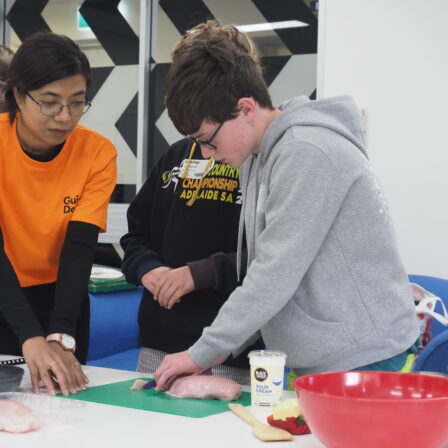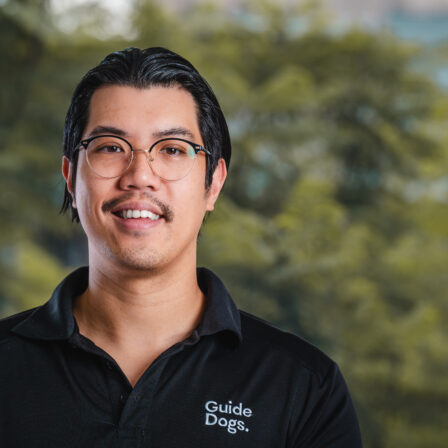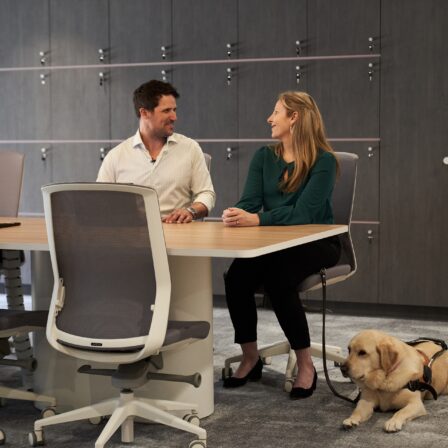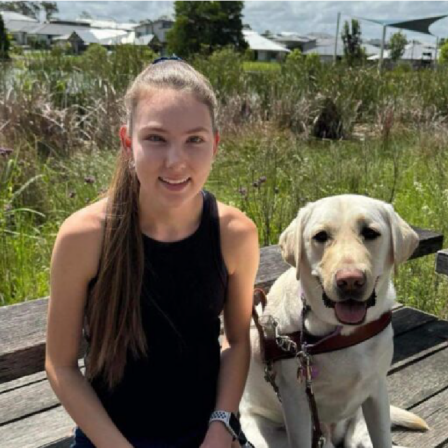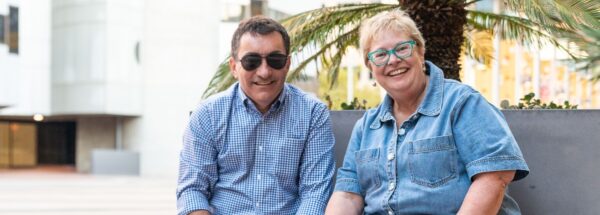News
Open your eyes to vision loss this International Day of People with Disability
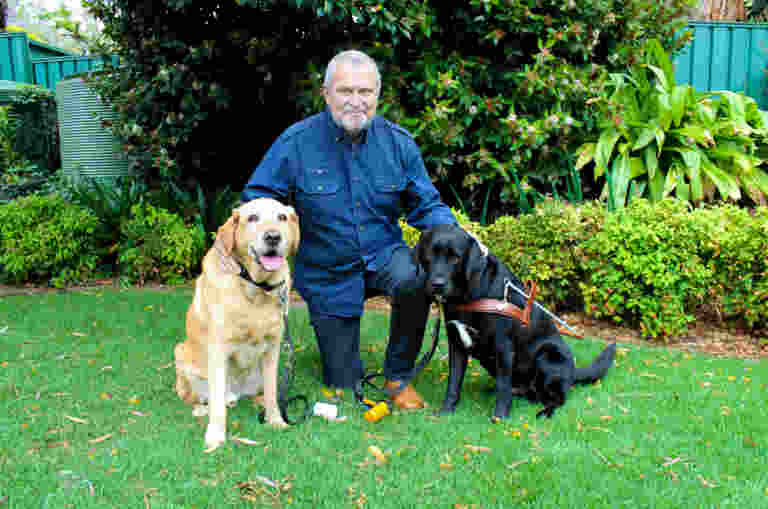
This International Day of People with Disability (IDPWD), Guide Dogs SA/NT is asking people to ditch their assumptions and open their eyes to the realities of living with vision loss and blindness.
For over 60 years, Guide Dogs has been using its expertise in dogs and vision to support people with low vision or blindness to live with independence, participation, inclusion and wellbeing.
However, people like Bruce Ind, long-time client and former Deputy Chairperson of the Guide Dogs SA/NT Board, feel that there is still much about their disability that is unknown by the community that impacts everyday life.
Bruce said as someone living with low vision, he feels there is a lack of understanding from the public that leads to people making potentially harmful assumptions about his abilities.
“I’ve got enough sight to get myself into trouble, but when you’re working with a Guide Dog, people make the assumption you can’t see a thing and that can be really interesting,” he said.
“I was walking in the mall one day and a woman came towards me and said ‘oh, I love dogs, can I pat your dog, please?’. I said ‘no, if you don’t mind, she is working and I can’t take her coat off so please don’t pat the dog’.”
“Well, she got the shock of her life when, as she was bending down to pat Keeley, I said ‘I did actually ask you not to pet the dog’. She thought that because I had a Guide Dog I couldn’t see anything!”
“I think that there’s a general perception out there that people with Guide Dogs have got no vision. I mean, I’ve got very little vision but I’ve got enough to make mistakes. I think that people make assumptions.”
Bruce was diagnosed with Stargardt disease, a condition that causes a slow loss of central vision in both eyes, after noticing a deterioration in his sight at age 40.
“The reason I went to Guide Dogs in the first instance was because I needed some mobility training with my with an ID cane, then following that with a long cane,” Bruce said.
“As my sight deteriorated I began to use the long cane for mobility, one, so people could identify that I was a person with low vision and two, so I could identify objects in the way as I travelled. It was a natural progression from the one-legged-dog (so to speak) to a Guide Dog.”
After retiring from his job in Information Systems Management, Bruce began walking more frequently, prompting his family to suggest he look into getting a Guide Dog.
Bruce was hesitant, however, because even as a client of Guide Dogs and having reasonably severe vision loss, he assumed there were others who might need a dog more
than him. Despite this, his family insisted and he received his first Guide Dog, Keeley, in October 2005.
“I’m a reasonably confident person but the confidence that I had when I was working with a Guide Dog increased,” Bruce said.
“My wife continually says that when we go for a walk – particularly the two of us with me working the Guide Dog – invariably, people walking towards us will look at the dog, then look at me and at my face, then look back at the dog and smile. It’s that immediate.”
“The first time I went out with Keeley under the control of a Guide Dog instructor I realised that there was a learning curve, that I had to show clearly that I trusted her and give her a chance to trust me. It was the same with Wallace and now with Oakland. You can’t grab hold of the harness and walk off into the sunset, you need to develop some sort of trust.”
After her retirement, Guide Dog, Keeley, was replaced by Guide Dog, Wallace, who is now enjoying handing over the harness to Bruce’s new Guide Dog, Oakland.
Guide Dogs SA/NT Chief Executive Aaron Chia said IDPWD is a great opportunity to raise public awareness of how they can better understand, accept and include the disability community.
“Something I don’t think people realise is many of our clients, and many people who are matched with our Guide Dogs, have some level of residual vision,” Aaron said.
“Vision loss or blindness exists on a spectrum and encompasses a range of conditions that often include additional specialised support needs. Everyone’s experience of vision loss is incredibly personal and it is important that as a community, we don’t assume a person’s level of vision or ability based on what we can see.”
“We work with people from infancy right up to adulthood to find what works for them to live their best possible life through orientation and mobility training, white cane training, guide dog orientation, assistive technologies and much more.”
“People living with low vision and blindness are much more capable and ordinary than the general public believe.”
To find out more about how Guide Dogs SA/NT support people living with low vision or blindness, visit www.sant.guidedogs.com.au.
How to ditch the assumptions this IDPWD:
- Don’t make assumptions about a person’s needs or abilities.
- Don’t touch a person with a disability or their mobility equipment, including guide dogs, without consent.
- Don’t alter your language to avoid using words like look, see or hear.
- Do ask if someone would like assistance and respect their response.
- Do ensure that spaces are accessible to all people, regardless of their ability.
